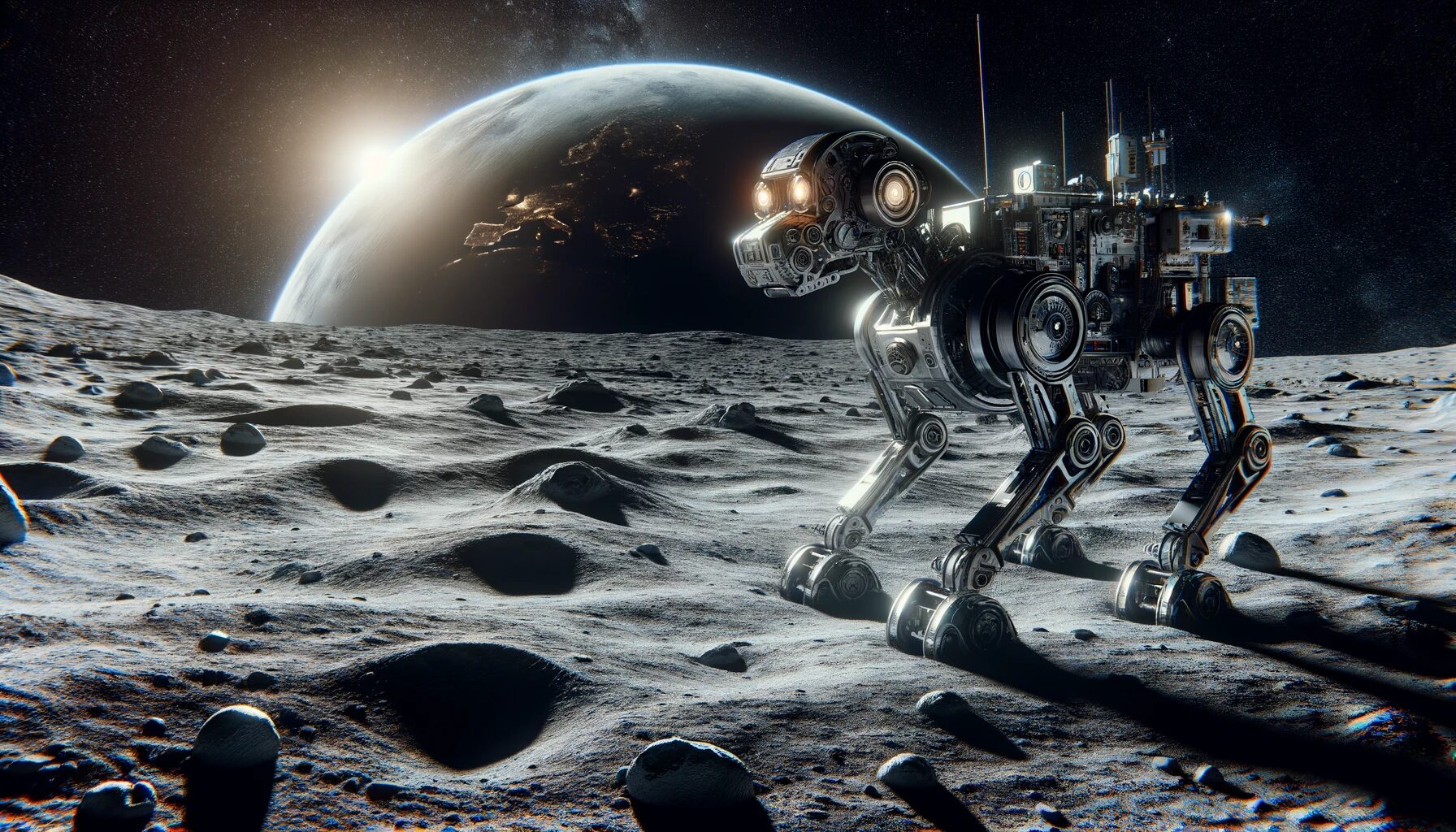In a future where robotic dogs roam the moon’s surface, the scientists at NASA have brought us one step closer to this sci-fi vision. Yes, you read that right—robot dogs on the moon! It’s an exciting time for both space enthusiasts and robotic aficionados, but it also raises an interesting question: for lunar rovers, is it better to roll or to trudge?
The Lunar Challenge
The moon, with its romantic but harsh environment, presents unique challenges. Its surface is covered with regolith—a fine, abrasive dust—that can gum up the works of sensitive machinery. The gravity, a mere 1/6th of Earth’s, also affects how vehicles and robots can maneuver. These conditions make choosing the right mode of locomotion not just a matter of technological preference but of survival and efficiency.
The Contenders: Wheels vs. Legs
Imagine two robotic explorers: one with wheels, rolling smoothly (we hope!) across the lunar landscape, and another, a robot dog, trudging along with mechanical precision. Both are designed to conquer the moon’s tricky terrain, but how do they stack up?
Rolling: The Case for Wheels
Wheels have been the go-to choice for most planetary rovers so far. They distribute weight evenly and can handle relatively flat and predictable surfaces well. The energy efficiency of a rolling rover can be expressed by considering the frictional force it needs to overcome:
\[ E_{\text{roll}} = \int \mu_{r} N \, dx \]
Where:
- \( E_{\text{roll}} \) is the energy used by the rolling rover,
- \( \mu_{r} \) is the coefficient of rolling resistance,
- \( N \) is the normal force (weight of the rover),
- \( dx \) is the distance traveled.
On the moon, \( N \) becomes \( \frac{1}{6} \) of the rover’s weight on Earth, potentially making rolling a very energy-efficient option.
Trudging: The Case for Legs
Legs, on the other hand, offer adaptability. They can maneuver over obstacles, climb steep inclines, and adjust to uneven terrain. This adaptability comes at an energy cost, however. The energy required for a legged rover, especially one mimicking the complex gait of a dog, involves dynamic calculations:
\[ E_{\text{trudge}} = \sum \frac{1}{2} m v^2 + mgz + \frac{1}{2} I \omega^2 \]
Where:
- \( E_{\text{trudge}} \) is the energy consumed per step,
- \( m \) is the mass of the leg,
- \( v \) is the velocity of the leg’s movement,
- \( g \) is the lunar gravity,
- \( z \) is the elevation change per step,
- \( I \) is the moment of inertia of the leg,
- \( \omega \) is the angular velocity.
Although more complex, the ability of legs to adapt can mean accessing areas that would be unreachable for a rolling rover.
A Practical Test: NASA’s Approach
To truly understand which method is better, NASA has taken a pragmatic approach—test both! Enter our robotic dog, a marvel of modern engineering. Equipped with sensors, cameras, and, crucially, four legs, it’s set to strut its stuff on the lunar surface.
Imagine it navigating craters, hopping over boulders, and doing all this while conducting scientific experiments. It sounds like a plot from a children’s cartoon, but it’s real science—and vital for our understanding of the most suitable technologies for exploring other worlds.
The Energy Debate: Mathematics in Motion
When comparing the energy equations for rolling and trudging, the key is to understand the various energy sinks—friction for wheels and dynamic motion for legs. The formulae hint at inherent trade-offs: rolling minimizes friction (especially in low-gravity environments), whereas trudging, though energy-intensive, maximizes adaptability.
Fun Experiments and Unexpected Discoveries
What could be more amusing than watching a robot dog attempt a moonwalk (quite literally)? NASA’s tests might reveal unexpected findings. Perhaps the regolith is less of a hassle for legs that can adjust their gait dynamically, or maybe the energy cost of adapting to every little rock makes rolling the clear winner. Only time—and rigorous scientific testing—will tell.
The Future of Lunar Exploration
Whether it rolls or trudges, the development of these robotic explorers is not just about adding a new character to our cosmic neighborhood. It’s about advancing our capabilities in robotics, improving our understanding of the moon, and paving the way for future human missions.
As we eagerly await the results of NASA’s lunar robot dog tests, we can’t help but fantasize about the potential for these technologies.
For more detailed insights, consider looking into NASA’s LASSIE (Legged Autonomous Surface Science in Analogue Environments) and LEAP (Legged Exploration of the Aristarchus Plateau) projects, which are pioneering the development and testing of these robotic systems. These programs are at the forefront of demonstrating how robotic mobility can be optimized for the lunar environment.
By following the developments in these programs, we gain a better understanding of the practical and theoretical aspects of robotic locomotion on the moon.

